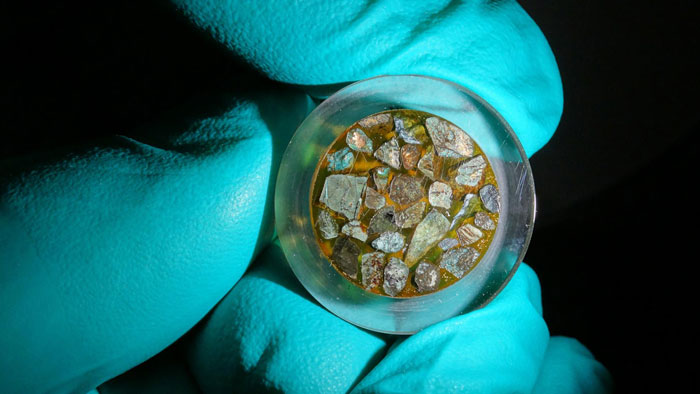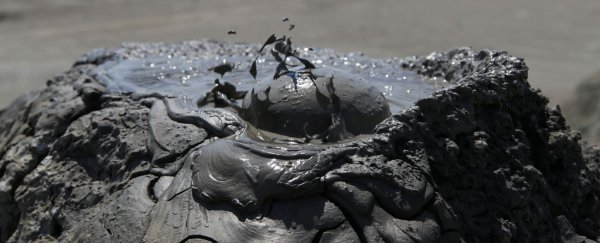Scientists may have discovered evidence of the deepest microbial life ever found on the planet, detecting the presence of organic matter in rock fragments spewed up by mud volcanoes near the deepest place on Earth, the Mariana Trench.
While researchers are hoping to find signs of alien lifeforms lurking under the surface of Jupiter's moon Europa and Saturn's moon Enceladus, the discovery highlights the possibility that equally strange and unknown organisms dwell hidden on Earth, buried as far as 10 kilometres (6.2 miles) below the sea floor.
"This is another hint at a great, deep biosphere on our planet," lead researcher Oliver Plümper from Utrecht University in the Netherlands told National Geographic.
"It could be huge or very small, but there is definitely something going on that we don't understand yet."
Plümper and his team ran a chemical analysis of rock fragments brought up to the seafloor by the South Chamorro Seamount, a large mud volcano underneath the western Pacific Ocean.
 Oliver Plümper/Utrecht University
Oliver Plümper/Utrecht University
What makes the mud volcano of particular interest is that it lies within the Izu-Bonin-Mariana Arc – the home of Challenger Deep and the Mariana Trench – and also the tectonic collision point where the Pacific Plate is forced under the Philippine Sea Plate.
When the team analysed 46 rock samples drilled from the mud volcano, they found chemicals associated with bacterial waste products, including hydrocarbons, lipids, and amino acids.
It's not the same as finding direct proof of life – but in the absence of other explanations, the team thinks the mud volcanoes could have hurled up the legacy of lifeforms that once existed deeper within the planet than scientists have previously discovered.
Which begs the questions, are they still there, and given they can survive living at such depths without light, just what the heck are they?
"The findings give us new insight into the habitability of the planet," explains one of the team, researcher Ivan Savov from the University of Leeds in the UK, in a press release.
"Given the difficulty of obtaining samples from the deep earth, there have not been many opportunities to explore how microbial life can be supported in the absence of photosynthesis. The mantle rocks we studied give us a link between the deep carbon cycle and the surface world."
While the team acknowledges that it's not yet clear what the source of the organic chemicals is, their own calculations suggest that life could exist as far as 10 km (6.2 miles) below the deepest point of sea floor – given the estimated temperature ranges underneath the mud volcanoes, and the known temperature limit for life of 122°C (251.6°F).
"I think the main take-home of this paper is how this has the potential to place life at some of the deepest environments on the planet," says geomicrobiologist Matthew Schrenk from Michigan State University, who wasn't involved with the study, told National Geographic.
"If we're looking for the depth limits of the biosphere, this could extend it by a lot."
The findings are reported in Proceedings of the National Academy of Sciences of the United States of America.
